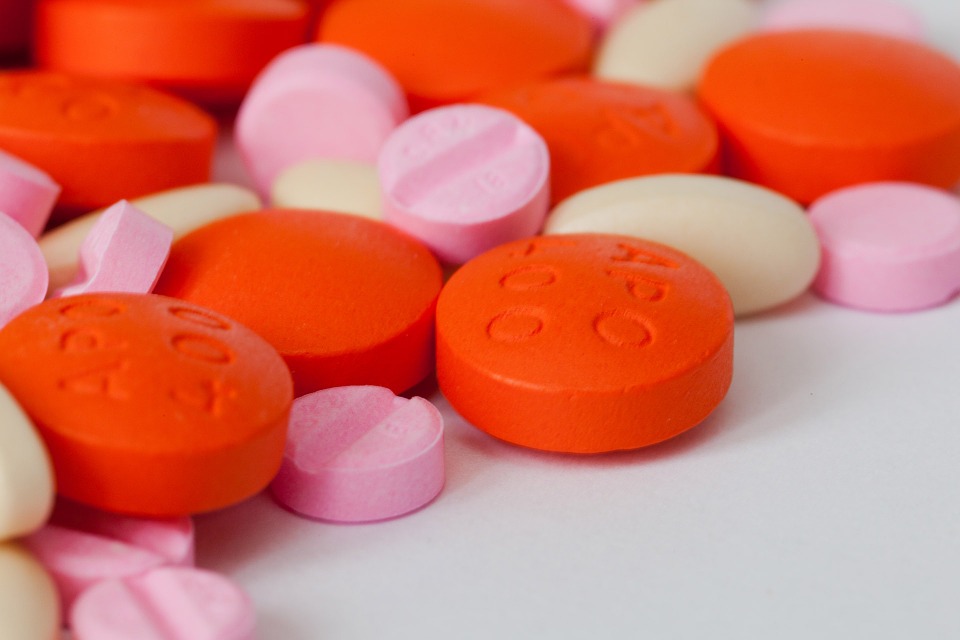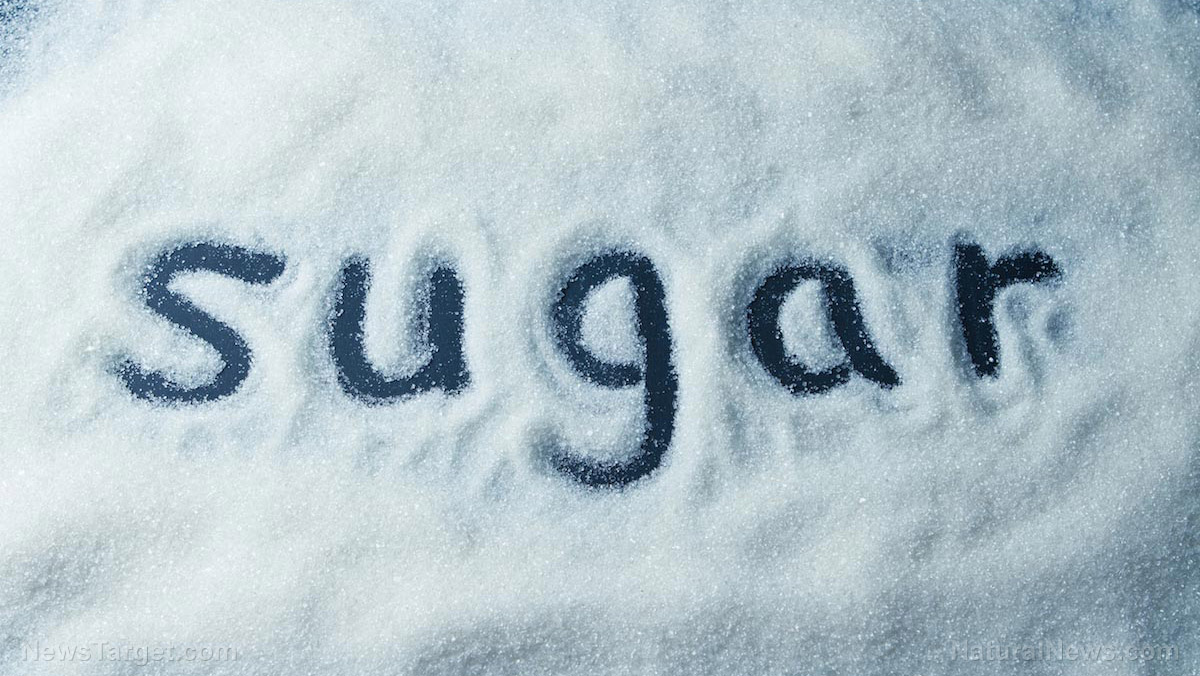How to detox yourself from sugar: A day-by-day guide
05/09/2018 / By Zoey Sky

Did you know that quitting sugar can help lower your risk of developing diabetes, heart disease and liver disease?
These health conditions have two things in common: Sugar as a culprit, and they all have a place in the list of top 15 causes of death.
If your diet consists of sugar-rich foods, your blood pressure can skyrocket. This can then cause inflammation which is connected to obesity. If you’re overweight, your hormonal system may be unbalanced and this can wreak havoc on your weight.
While it can be difficult to go on a sugar detox, nutritionists caution that quitting the sweet stuff completely is the most effective way of removing “bad sugars” from your system. On the bright side, even if you go through sugar withdrawals, which are inevitable, a sugar detox done right has significant health benefits.
The 21-day sugar detox road map
If you’re not sure where to start, follow this 21-day sugar detox road map outlined by Lorraine Kearney, a sugar detox expert. Kearney is also an associate professor of nutrition at the City University of New York.
Day 1: Cut out all of the sugar in your diet.
Kearney explained that a sugar detox is a “pure one” so it requires you to go cold turkey on everything that contains added sugars. (Related: 10 Ways to Detox from Sugar.)
A sugar detox must remove all artificial sugars from your diet. One way to ensure that you’re eliminating the right kind of sugar is by avoiding anything that’s “low sugar.” Kearney explained that this “usually means that the manufacturer is adding in more sodium or fats to increase the flavor or adding sugar alcohols that help the body digest it.”
It’s okay to keep consuming whole foods that contain natural sugars, like fruits. Kearney also advised people who want to go on a sugar detox to consult a nutritionist so they can help you figure out how you can modify your diet.
With a nutritionist, you can follow a meal plan “based on optimal nutrition” and includes foods that make you feel full and can help balance your blood sugar. You can also keep eating fruits which contain natural sugar that the body can process and are rich in antioxidants, fiber, and nutrients that are crucial for “balancing nutrition.”
Days 3-7: Eat healthy snacks to get through the withdrawals.
When you quit sugar, the first three to five days will be the hardest since the body is detoxifying. Like other withdrawal experiences, sugar withdrawal often involves symptoms like fatigue, headaches, muscle aches, and sugar cravings. You may also experience dizziness, a lack of focus, nausea, shaking, and trouble sleeping.
Kearney added that after five days, you’ll eventually feel lighter. At this stage, you have to keep eating greens, healthy snacks, and whole grains to minimize the sugar cravings since your body will “[cry] out for food.” This will also help keep your blood sugar balanced.
Healthy snacks that you can eat include whole grains like brown rice, quinoa, and sorghum. You can eat vegetables like Brussels sprouts, carrots, celery, and turnips. For fruits, you can eat berries, grapefruits, oranges, and pears.
If your blood sugar level is unbalanced, the cravings will start, signaling that you’ve waited too long between meals.
At this stage, the body will convert whatever it can into glucose so you need to consume greens and whole grains. You must be mindful of what you eat and the whole digestion process because certain foods may cause an inflammatory response in the body, such as bloating, cramping, or flatulence. Once you identify problem foods, it’ll be easier to avoid inflammation and make your diet more sustainable.
When the cravings start, try to ask yourself if it’s the sugar talking or if it’s being caused by an underlying issue. If you think the urge is too much, drink some water, walk, or exercise to get the endorphins flowing through your body.
Days 8-10: The sugar is now gone from your system and you can “taste the difference.”
Once a week has passed, you’ll feel more focused and your overall cognitive functioning will improve. In some cases, this can happen after only four days of a sugar detox.
Kearney said, “Sugar highs and lows, spikes and crashing levels offset hormone levels. Those imbalances are like a roller coaster, so when they are stable it promotes better cognitive and body functioning.”
After at least 10 days, your taste buds will start to “change,” or your entire taste system will reset. Sugar and its taste signals the hormonal system so it knows when the body needs to eat.
Both our taste receptors and gut “read” sugar and they both determine how the molecule has to be “read.” Because your receptors have been exposed to less sugar, they may “develop a heightened sweetness.” The reactors may even think that some foods are too sweet.
During this time your cravings may start to subside. When they do occur, you may have a lower tolerance for sweetness. However, to avoid any temptation, keep eating healthy home-cooked meals.
Days 15-21: You can start eating desserts again since you’ll now know “the difference between what your body wants and needs.”
After 15 days, your energy will be at its peak. You’ll now be aware of 95 percent of your whole digestion process. Now that you’ve eliminated the “tricky effects” of sugar, you’ll find it easier to identify satisfying foods and those that may cause inflammation.
During this last week, you’ll feel better. You’ll be more energized and it’ll be easier to identify the difference between hunger pains and sugar cravings. This period is crucial for individuals with busy schedules, especially since they’re often in a rush, which may heighten the body’s fight or flight mode, or adrenal cortisol response, into overdrive.
It may be difficult, but once you learn how to tell the difference between sugar cravings and hunger, you’ll have an easier time choosing a healthy snack instead of something with empty and sugary/faux-sugary calories.
After the detox
After the sugar detox, you can start gradually eating things not included in your meal plan. Don’t over-indulge because even a little salt can cause abdominal swelling or cramps.
However, you can consume some sugar. Just make sure to portion the food properly. Once you eat something sweet, consume something that contains fiber, some lean protein, and whole grains. Kearney concluded that the key to a successful sugar detox is to keep “everything in moderation.”
You can read more articles about artificial sweeteners, sugar-rich foods to avoid, and how to do a sugar detox at Sweeteners.news.
Sources include:
Tagged Under: added sugars, addiction, artificial sweeteners, aspartame, cardiovascular disease, desserts, detox, diabetes, diet tips, eating habits, fruits, good diet, healthy diet, healthy diets, healthy snacks, heart disease, heart health, how to, liver disease, mind body science, obese, obesity, overweight, prevent disease, proper nutrition, refined sugar, snacking habits, soda, sugar, sugar addiction, sugar additives, sugar cravings, sugar detox, sugar detox roadmap, sugar withdrawals, sweeteners, sweets, tips, weight loss




















